Committed to our goal of providing green & clean energy solutions to our corporate & industrial partners, we have installed 550+ rooftop solar power plants across India with a rooftop solar capacity of over 250+ MWp across the country, helping abate 331,200 tons of CO2 per annum and providing green energy to our clients across diverse sectors – from Government, Manufacturing, Automotive, Education, Real Estate, Pharmaceuticals, Food & Beverages and IT/ITES.
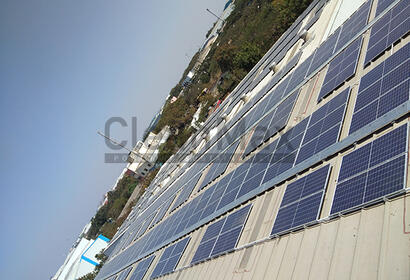
| Project size: | 576 kWp |
| Roof type: | Metal Rooftop |
| Module type: | MONO Crystalline |
| Inverter type: | String |
| Industry type: | Auto & Auto ancillaries |
| Commissioned on: | 2019 |
| CO2 abated annually: | 829 Tonnes |
| Equivalent to planting: | 13,714 trees |
| View Photos | |
576 kWp, Metal Rooftop Installation
Battery Manufacturer, Rajangaon
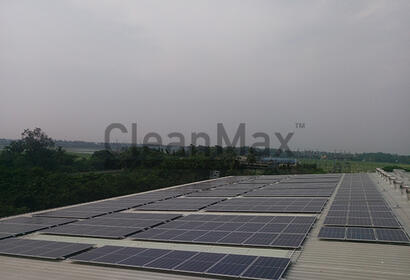
| Project size: | 1,324 kWp |
| Roof type: | RCC + Metal Rooftop |
| Module type: | Polycrystalline |
| Inverter type: | String |
| Industry type: | Auto & Auto ancillaries |
| Commissioned on: | 2019 |
| CO2 abated annually: | 1,907 Tonnes |
| Equivalent to planting: | 28,606 trees |
| View Photos | |
1,324 kWp, RCC + Metal Rooftop Installation
Automotive Component Manufacturer, Pondicherry
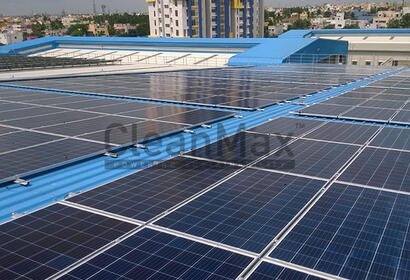
| Project size: | 6,000 kWp |
| Roof type: | Metal + RCC + Ground Mount |
| Module type: | Polycrystalline |
| Inverter type: | String |
| Industry type: | Infrastructure |
| Commissioned on: | 2018 |
| CO2 abated annually: | 8,640 Tonnes |
| Equivalent to planting: | 142,864 trees |
| View Photos | |
6,000 kWp, RCC+Metal Rooftop and Ground Mount Installation
Chennai Metro Rail Limited, Chennai
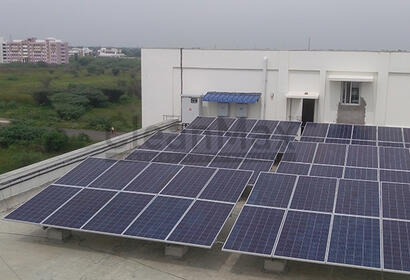
| Project size: | 351 kWp |
| Roof type: | RCC Rooftop |
| Module type: | Polycrystalline |
| Inverter type: | String |
| Industry type: | Education |
| Commissioned on: | 2018 |
| CO2 abated annually: | 505 Tonnes |
| Equivalent to planting: | 8,358 trees |
| View Photos | |
351 kWp, RCC Rooftop Installation
Central University of Tamil Nadu, Chennai
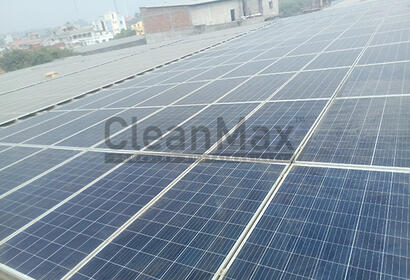
| Project size: | 1,420 kWp |
| Roof type: | Metal Rooftop |
| Module type: | Polycrystalline |
| Inverter type: | String |
| Industry type: | Textiles |
| Commissioned on: | 2018 |
| CO2 abated annually: | 2,045 Tonnes |
| Equivalent to planting: | 33,811 trees |
| View Photos | |
1,420 kWp, Metal Rooftop Installation
Textile Manufacturer, Kolkata
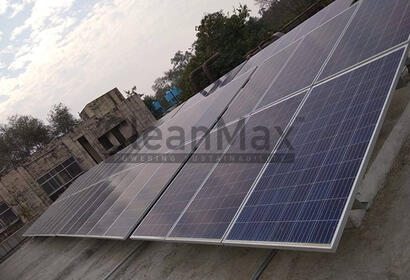
| Project size: | 1,112 kWp |
| Roof type: | RCC Rooftop and Ground Mount |
| Module type: | Polycrystalline |
| Inverter type: | String |
| Industry type: | Education |
| Commissioned on: | 2018 |
| CO2 abated annually: | 1,601 Tonnes |
| Equivalent to planting: | 26,466 trees |
| View Photos | |
1,112 kWp, RCC Rooftop and Ground Mount Installation
Sanjay Gandhi Postgraduate Institute of Medical Sciences, Lucknow
| State Pages on Website | Eligibility Criteria for Net Metering i.e. Upper cap and Lower cap | Banking Norms for Rooftop | Key Approvals required for Rooftop | DISCOMs | Key Regulatory Charges/exemptions for Rooftop (if any) For more details visit individual DISCOM website. |
|---|---|---|---|---|---|
| Maharashtra | 1 kW–1 MW | Yearly | 1. CEIG approval 2. The consumer and the DISCOM will enter into a Net Metering Connection Agreement, which shall remain in force for 20 years, in the prescribed format after the roof-top solar PV system is installed but before it is synchronized with the distribution network |
The rooftop solar system installed on eligible consumer premises, are exempt from payment of banking and wheeling charges and losses, cross subsidy and additional surcharge etc. Project wise Statutory fees, testing fees, supervision charges, application fees etc. are applicable and varies time to time as policy changes | |
| Uttar Pradesh | 1 kW–2 MW | Yearly | 1. CEIG approval 2. No net metering |
Rooftop solar PV system under gross metering scheme / net metering scheme, whether self-owned or third party owned and installed on eligible consumer premises are exempt from payment of wheeling and cross subsidy surcharge. | |
| Rajasthan | 1 kW–1 MW | Yearly | 1. CEIG approval 2. Any eligible consumer under the Rajasthan Net Metering Regulations may obtain approval for installation of rooftop solar system on its premises under net metering arrangement in accordance with the Rajasthan Net Metering Regulations and execution of an interconnection agreement for net metering with the distribution licensee. |
Rooftop PV solar power plants under net metering arrangement are exempt from payment of wheeling, banking and cross subsidy surcharges. | |
| Karnataka | 1 kW–1 MW | Monthly | 1. CEIG approval (Applicable above 1MW) 2. Net metering approval (if applicable up to 1 MW) |
Transmission and wheeling charges will not be applicable to rooftop solar projects to the extent there is no wheeling of such electricity. In case it is a ground mount project then banking and wheeling charges may be applicable | |
| Haryana | NA–1 MW | Yearly | 1. CEIG approval 2. Net metering approval (if applicable) or a ‘no-objection certificate’ from the applicable local distribution utility. The consumer and the distribution utility will enter into a Net Metering Connection Agreement in the prescribed format after the roof-top solar PV system is installed but before it is synchronized with the distribution network. |
While the Haryana Solar Policy has waived electricity taxes, electricity cess, electricity duty, and cross subsidy charges etc., but Transmission, wheeling and banking charges may be applicable as per the guidelines and orders issued by the HERC from time to time. | |
| Tamil Nadu | Consumers under Low Tension category except Hut and Agricultural category of tariff | Yearly | 1. CEIG approval |
Transmission and wheeling charges will not be applicable to rooftop solar projects to the extent there is no wheeling of such electricity. | |
| Delhi | 1 kW – NA* | Yearly | 1. CEIG approval 2. Net metering approval (if applicable) or NOC from DISCOM |
In order to promote the third party owned systems and avoid complexities around evaluation and monitoring of wheeling/banking/open access charges, the net metering rooftop solar arrangements are specifically exempted from these charges | |
| Telangana | 1 kW–1 MW | Half-yearly | 1. CEIG Approval 2. The Net metering connection agreement has to be executed by the Consumer with the DISCOM within 15 days of receipt of the technical feasibility approval 3. On inspection of the equipment SPV system are to be synchronized within 10 working days, provided the systems are installed as per the norms and standards |
1. Tariff payable by the DISCOM is the APCC of the DISCOM 2. Exempted from transmission charges, transmission loss, wheeling charge, wheeling loss, cross subsidy surcharge and additional surcharge 3. The CDM benefits shall be retained by the consumer for the first year and second year onwards, 10%, progressively increasing by 10% each year till the benefits are shared in equal proportion |
|
| Gujarat | 1 kW–1 MW | Yearly | 1. CEIG approval 2. Net metering approval (OPEX project not allowed under net metering regulation. Only CAPEX projects considered for net metering) or NOC from DISCOM |
Project wise Statutory fees, testing fees, supervision charges, application fees etc. are applicable and varies time to time as policy changes | |
| Andhra Pradesh | 1 kW–1 MW | Quarterly | 1. CEIG approval 2. Net metering approval (if applicable) or NOC from DISCOM |
No Distribution losses and charges will be collected from the Eligible Developers /Group /Society /Individuals by the DISCOMs. All other charges shall be applicable as per the Tariff Order amended from time to time. | |
| West Bengal | 5 kW–not specified | Yearly | 1. CEIG approval 2. Net metering approval (if applicable) or NOC from DISCOM |
Transmission and wheeling charges will not be applicable to rooftop solar projects to the extent there is no wheeling of such electricity. | |
| Puducherry | NA–500 kWp; | Yearly | 1. CEA (Central electrical authority) approval 2. Net metering approval (if applicable) |
Transmission and wheeling charges will not be applicable to rooftop solar projects to the extent there is no wheeling of such electricity |
Eligibility Criteria for Net Metering i.e. Upper cap and Lower cap
1 kW–1 MW
Banking Norms for Rooftop
Yearly
Key Approvals required for Rooftop
DISCOMs
Key Regulatory Charges/exemptions for Rooftop (if any) For more details visit individual DISCOM website.
The rooftop solar system installed on eligible consumer premises, are exempt from payment of banking and wheeling charges and losses, cross subsidy and additional surcharge etc. Project wise Statutory fees, testing fees, supervision charges, application fees etc. are applicable and varies time to time as policy changes
Eligibility Criteria for Net Metering i.e. Upper cap and Lower cap
1 kW–2 MW
Banking Norms for Rooftop
Yearly
Key Approvals required for Rooftop
DISCOMs
Key Regulatory Charges/exemptions for Rooftop (if any) For more details visit individual DISCOM website.
Rooftop solar PV system under gross metering scheme / net metering scheme, whether self-owned or third party owned and installed on eligible consumer premises are exempt from payment of wheeling and cross subsidy surcharge.
Eligibility Criteria for Net Metering i.e. Upper cap and Lower cap
1 kW–1 MW
Banking Norms for Rooftop
Yearly
Key Approvals required for Rooftop
DISCOMs
Key Regulatory Charges/exemptions for Rooftop (if any) For more details visit individual DISCOM website.
Rooftop PV solar power plants under net metering arrangement are exempt from payment of wheeling, banking and cross subsidy surcharges.
Eligibility Criteria for Net Metering i.e. Upper cap and Lower cap
1 kW–1 MW
Banking Norms for Rooftop
Yearly
Key Approvals required for Rooftop
DISCOMs
Key Regulatory Charges/exemptions for Rooftop (if any) For more details visit individual DISCOM website.
Transmission and wheeling charges will not be applicable to rooftop solar projects to the extent there is no wheeling of such electricity. In case it is a ground mount project then banking and wheeling charges may be applicable
Eligibility Criteria for Net Metering i.e. Upper cap and Lower cap
NA–1 MW
Banking Norms for Rooftop
Yearly
Key Approvals required for Rooftop
Key Regulatory Charges/exemptions for Rooftop (if any) For more details visit individual DISCOM website.
While the Haryana Solar Policy has waived electricity taxes, electricity cess, electricity duty, and cross subsidy charges etc., but Transmission, wheeling and banking charges may be applicable as per the guidelines and orders issued by the HERC from time to time.
Eligibility Criteria for Net Metering i.e. Upper cap and Lower cap
Consumers under Low Tension category except Hut and Agricultural category of tariff
Banking Norms for Rooftop
Yearly
Key Approvals required for Rooftop
Key Regulatory Charges/exemptions for Rooftop (if any) For more details visit individual DISCOM website.
Transmission and wheeling charges will not be applicable to rooftop solar projects to the extent there is no wheeling of such electricity.
Eligibility Criteria for Net Metering i.e. Upper cap and Lower cap
1 kW – NA*
Banking Norms for Rooftop
Yearly
Key Approvals required for Rooftop
DISCOMs
Key Regulatory Charges/exemptions for Rooftop (if any) For more details visit individual DISCOM website.
In order to promote the third party owned systems and avoid complexities around evaluation and monitoring of wheeling/banking/open access charges, the net metering rooftop solar arrangements are specifically exempted from these charges
Eligibility Criteria for Net Metering i.e. Upper cap and Lower cap
1 kW–1 MW
Banking Norms for Rooftop
Half-yearly
Key Approvals required for Rooftop
DISCOMs
Key Regulatory Charges/exemptions for Rooftop (if any) For more details visit individual DISCOM website.
Eligibility Criteria for Net Metering i.e. Upper cap and Lower cap
1 kW–1 MW
Banking Norms for Rooftop
Yearly
Key Approvals required for Rooftop
DISCOMs
Key Regulatory Charges/exemptions for Rooftop (if any) For more details visit individual DISCOM website.
Project wise Statutory fees, testing fees, supervision charges, application fees etc. are applicable and varies time to time as policy changes
Eligibility Criteria for Net Metering i.e. Upper cap and Lower cap
1 kW–1 MW
Banking Norms for Rooftop
Quarterly
Key Approvals required for Rooftop
DISCOMs
Key Regulatory Charges/exemptions for Rooftop (if any) For more details visit individual DISCOM website.
No Distribution losses and charges will be collected from the Eligible Developers /Group /Society /Individuals by the DISCOMs. All other charges shall be applicable as per the Tariff Order amended from time to time.
Eligibility Criteria for Net Metering i.e. Upper cap and Lower cap
5 kW–not specified
Banking Norms for Rooftop
Yearly
Key Approvals required for Rooftop
Key Regulatory Charges/exemptions for Rooftop (if any) For more details visit individual DISCOM website.
Transmission and wheeling charges will not be applicable to rooftop solar projects to the extent there is no wheeling of such electricity.
Eligibility Criteria for Net Metering i.e. Upper cap and Lower cap
NA–500 kWp;
Banking Norms for Rooftop
Yearly
Key Approvals required for Rooftop
Key Regulatory Charges/exemptions for Rooftop (if any) For more details visit individual DISCOM website.
Transmission and wheeling charges will not be applicable to rooftop solar projects to the extent there is no wheeling of such electricity
* Subject to
- feasibility of interconnection with grid
- available capacity of service line connection of consumer of premise
- the sanctioned load of consumer of the premise
Source: Centre for Energy Finance, Individual DISCOM websites
Disclaimer: The information presented above is for educational purposes only. All the data provided in the article above are approximate values derived from third party sources, research articles or on ground experience and CleanMax would take no responsibility or have any obligation over the correctness of data. The regulatory policies get updated from time to time and it is highly encouraged that you head over to individual DISCOM sites to refer the latest changes.
| NOC | No Objection Certificate |
| HERC | Haryana Electricity Regulatory Commission |
| APPC | Average Power Purchase Cost |
| CEIG | Chief Electrical Inspector to Government |
| CDM | Clean Development Mechanism |